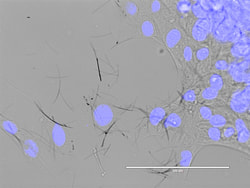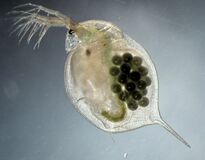Nanotoxicology

Nanomaterials are materials that have at least one dimension that ranges in size from 1-100 nm. At this size range, the relative surface area of a material is very large compared to its internal volume. Because chemical and physical reactions occur on material surfaces, nanomaterials have increased potential for enhanced chemical and physical reactions compared to macro-sized materials of the same elemental make up. In addition, molecular forces can significantly change nanomaterial behavior in biological systems and make it difficult to understand and predict its toxicity. The Vulpe lab is part of an international collaboration that investigates how the dimension of silver nanowires influences their toxicity in cells and organisms. Silver nanowires have a significant application as conductors in flexible electronics and touchscreen devices, and this research can help make the synthesis and disposal of silver nanowire – enabled devices to be safer and more sustainable.
Metal mixture toxicity

Behavioral Toxicology
Environmental DNA
Our Collaborators
Benjamin Gilbert, Lawrence Berkeley National Laboratory
Laurent Charlet, Institut des Sciences de la Terre, Grenoble, France
Caroline Celle, CEA Grenoble, France
Jean Pierre-Simonato, University of Grenoble-Alps, France
Annette Hoffman, University of Lille, France
